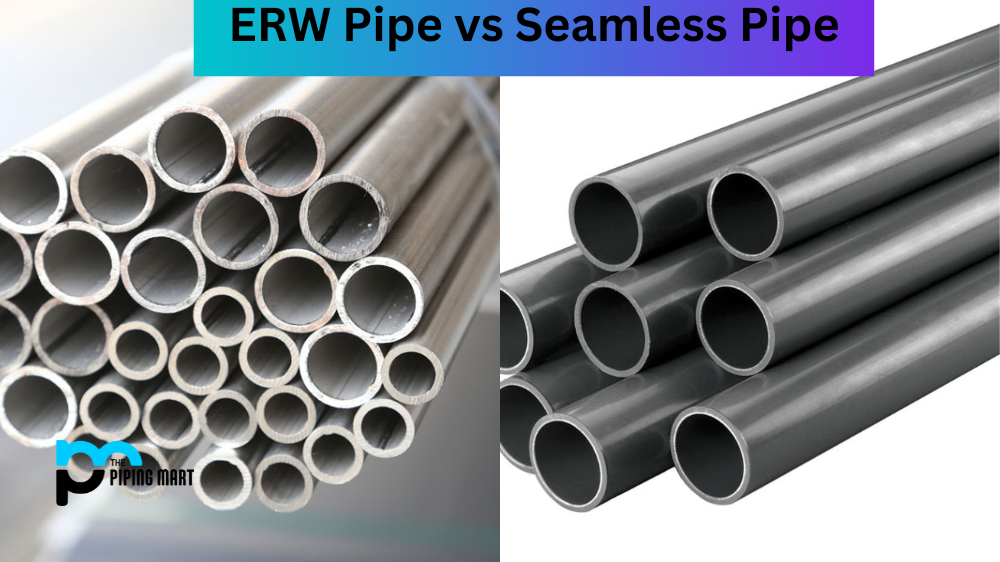When selecting pipes for various industrial purposes such as oil and gas transmission, transportation of water, or other industrial uses, the two most popular options include ERW pipe and seamless pipe. These pipes are designed to carry fluids and gases in different environments. However, several key differences between these two types of lines often need clarification. In this blog post, we will explore the differences between ERW pipe and seamless pipe to help you decide which piping system is best for your industrial needs.
ERW Pipe
ERW, or Electric Resistance Welded, pipes consist of a longitudinal seam created using high-frequency waves. ERW pipes are made by rolling a coil of steel plate into a cylindrical shape and then closing the edges using a welding process. ERW pipes are typically less expensive than seamless ones and are widely used in construction and manufacturing. ERW pipes are available in various diameters and wall thicknesses to satisfy different demands and are ideal for carrying low-grade fluids and gases.
Seamless Pipe
As the name suggests, seamless pipes have no welded seam joints. They are manufactured using a solid cylindrical piece of steel. Seamless pipes are made by piercing the solid steel and drawing it out to form a line. This manufacturing method produces a rope with uniform thickness and strength, making it ideal for carrying high-pressure fluids and gases. The lack of welded seams in seamless pipes makes them more durable, dependable, and less prone to cracking or bubbling than ERW pipes. However, the cost of seamless pipes is usually higher than ERW pipes.
Difference Between ERW Pipe and Seamless Pipe
Chemical Composition
The main difference between ERW and seamless pipe is the raw material used in manufacturing. ERW pipe is manufactured from steel coils slit to specific widths, which are then welded together. Seamless pipe is manufactured from a solid piece of metal that is heated and extruded to create a pipe.
Manufacturing Process
ERW pipe is made from a strip of steel rolled into a tube and then welded, while the seamless pipe is made from a solid piece of metal that is heated and extruded to create a line.
Cost Comparison
As mentioned earlier, the cost of ERW pipes is typically lower than seamless pipes. However, the price may vary depending on the pipe’s size, grade, and wall thickness. A seamless pipe is harder to manufacture, which requires more time, energy, and resources, resulting in a higher cost. On the other hand, ERW pipes are manufactured quickly and can be produced in large quantities, leading to a lower price but with lower durability.
Size and Shape
ERW pipe can be manufactured in sizes ranging from 2 to 24 inches, while seamless pipe can be manufactured in sizes up to 100 inches. ERW pipe is available in round, square, and rectangular shapes, while seamless pipe is available in round and oval shapes.
Strength and Quality Comparison
Seamless pipes are stronger and more durable than ERW pipes because of their manufacturing process and uniform thickness. The absence of welded seams in the seamless pipe makes them less likely to fail, crack, or leak, making them ideal for high-pressure and high-temperature applications. While cheaper, ERW pipes are prone to brittleness, cracking, and impact stress, particularly at welded zones, which can lead to hazards and leaks. ERW pipes are best suited for low-pressure or less critical applications.
Applications
ERW pipe is typically used for low-pressure applications, such as the transportation of water or oil. In contrast, seamless pipe is often used for high-pressure applications, such as the transportation of gas or steam.
Conclusion
In conclusion, choosing a suitable pipe for your industrial application is essential for the smooth functioning of your operations. The choice between ERW pipes and seamless pipes ultimately comes down to the cost, durability, and appropriateness of the application. If cost is a significant concern and safety requirements are relaxed, ERW pipes are the right choice. For high-pressure, high-temperature applications, safety and durability must take precedence; seamless pipes are a better choice. Understanding the key differences and evaluating these factors will help you make an informed decision and select the proper piping system for your needs.

Abhishek is a seasoned blogger and industry expert, sharing his insights and knowledge on various topics. With his research, Abhishek offers valuable insights and tips for professionals and enthusiasts. Follow him for expert advice on the latest trends and developments in the metal industry.




